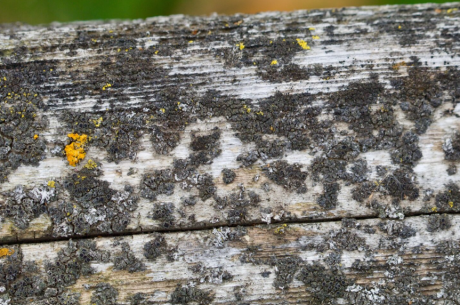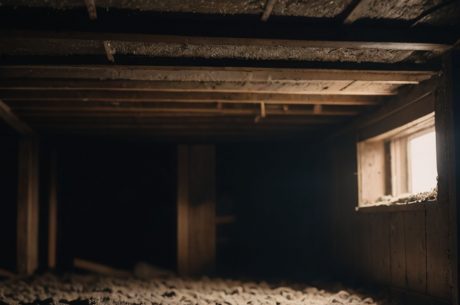How Humidity and Poor Ventilation Leads to Mold Growth
Table of Contents
Mold is a common problem that plagues homes and commercial properties, especially in regions with high humidity or buildings lacking adequate ventilation. While mold might seem like a mere cosmetic issue, it can cause serious health problems and significant structural damage if left unaddressed.
One of the most overlooked causes of mold growth is the combination of high humidity levels and poor ventilation. Understanding how these factors contribute to mold infestations is the first step toward preventing them.
The Basics of Mold Growth
Mold is a type of fungus that thrives in moist environments. Mold spores are always present in the air, both indoors and outdoors. However, for these spores to grow into visible mold colonies, they require three primary conditions:
- Moisture
- Organic material (such as wood, drywall, or fabric)
- A suitable temperature (typically between 60°F and 80°F)
Humidity and poor ventilation play a key role in creating the moist environment mold needs to flourish.
How Humidity Fuels Mold Growth
Humidity refers to the amount of moisture in the air. When indoor humidity levels rise above 60%, it creates a damp environment conducive to mold growth. High humidity causes condensation on walls, ceilings, and windows, especially in areas with poor insulation or temperature regulation. This moisture can seep into porous materials like drywall, carpet, insulation, and wood, creating ideal breeding grounds for mold spores.
Even activities as routine as cooking, showering, and drying clothes indoors can significantly increase humidity levels if the space isn’t properly ventilated. In climates like those in the northeastern U.S. — including places like Auburn, Maine — seasonal humidity spikes can create recurring mold issues without proactive moisture control.
Common Signs of High Humidity in a Home:
- Condensation on windows or walls
- Musty odors
- Warping of wood or drywall
- Peeling paint or wallpaper
- Persistent dampness in basements or crawl spaces
Once humidity becomes a constant, mold can begin to grow in as little as 24 to 48 hours.
The Role of Poor Ventilation
Ventilation is the process of moving fresh air into a space and pushing stale, moisture-laden air out. Without proper ventilation, humid air becomes trapped inside the building, especially in closed spaces like bathrooms, basements, attics, and laundry rooms. This stagnant air allows moisture levels to build up, increasing the risk of condensation and damp surfaces.
Poor ventilation also leads to uneven temperature distribution. When warm, moist air contacts cooler surfaces, it condenses into water droplets — providing yet another pathway for mold to take hold.
Areas Most Vulnerable to Mold Due to Poor Ventilation:
- Bathrooms – Without exhaust fans or open windows, steam from showers can saturate the air quickly.
- Kitchens – Cooking and dishwashing generate a surprising amount of moisture.
- Basements and Crawl Spaces – These areas often lack windows and rely on mechanical ventilation, which may not be adequate.
- Attics – Improperly ventilated attics can trap hot, moist air rising from the rest of the house.
The Dangerous Combination: Humidity + Poor Ventilation
When high humidity and poor ventilation combine, it creates a perfect storm for mold growth. Moist air becomes trapped and settles into building materials, which then absorb the excess moisture. Over time, mold begins to form on surfaces like ceilings, walls, insulation, and floor joists.
This combination not only promotes faster mold growth but also makes it more difficult to detect early. Since mold often starts in hidden areas — behind drywall, under carpeting, or in HVAC systems — by the time it becomes visible, the infestation may already be extensive.
Health and Property Risks of Mold
Exposure to mold can lead to a variety of health issues, especially for individuals with allergies, asthma, or weakened immune systems. Common symptoms include coughing, sneezing, skin irritation, eye irritation, and respiratory problems.
From a structural standpoint, mold can weaken wood, rot insulation, and stain surfaces. Severe infestations can even compromise a building’s integrity, leading to costly repairs or even full-scale restorations.

Preventing Mold: Control Humidity and Improve Ventilation
Prevention is the most effective way to deal with mold. Here are some essential steps property owners can take:
1. Monitor Humidity Levels
Keep indoor humidity below 60%—ideally between 30–50%. Use a hygrometer to monitor levels, and install dehumidifiers where necessary, especially in basements and bathrooms.
2. Ventilate Properly
Ensure all bathrooms and kitchens are equipped with exhaust fans that vent to the outside. Open windows when weather permits and consider installing ventilation systems in basements and attics.
3. Fix Leaks Immediately
Moisture from leaks in plumbing, roofs, or windows can significantly increase humidity. Regularly inspect and repair any sources of water intrusion.
4. Use Mold-Resistant Materials
When remodeling or building, consider using mold-resistant drywall, paints, and insulation—especially in moisture-prone areas.
5. Schedule Regular Inspections
Work with a restoration or mold remediation professional to inspect your home annually. Early detection can save thousands in long-term repair costs.
Conclusion
Humidity and poor ventilation are a dangerous duo when it comes to mold growth. Left unchecked, they can turn a safe, comfortable home into a hazardous environment. The good news is that with proper moisture control and ventilation practices, mold can be prevented or managed effectively. If you suspect mold in your home, don’t wait—consult with a professional to assess and resolve the issue before it becomes a serious health and safety concern.
Trust Our Professional Mold Remediation Services in Maine – (207) 531-1200
If you’re dealing with mold growth, don’t settle for a temporary solution. At our Auburn-based restoration business, we specialize in comprehensive mold remediation services. Our experienced team will thoroughly assess your property, contain the affected areas, and restore your space to a clean, safe condition.
We use advanced equipment and proven techniques to ensure the complete removal of mold and moisture sources. With our commitment to quality and customer satisfaction, you can trust us to handle even the most challenging mold problems.
We understand the importance of acting quickly to prevent further damage and ensure the health of your family or employees. Contact us today on (207) 531-1200 to schedule a mold inspection in Maine and experience the difference that professional mold remediation can make.


